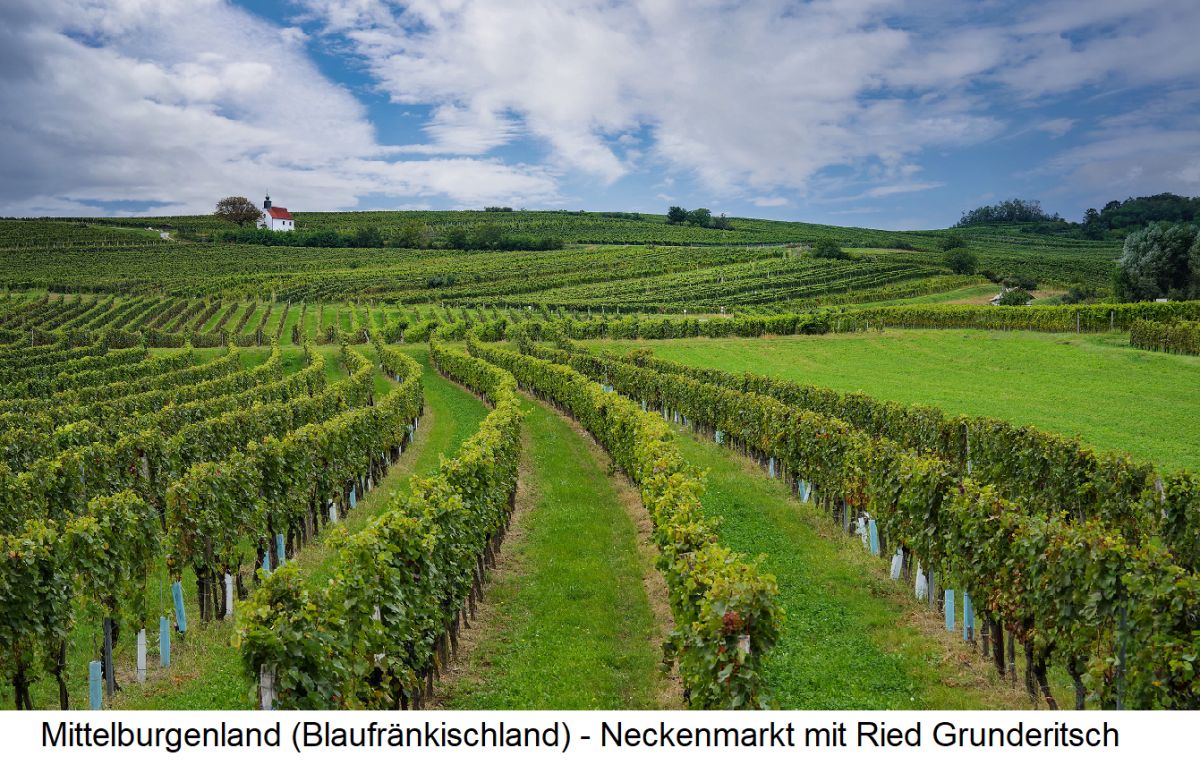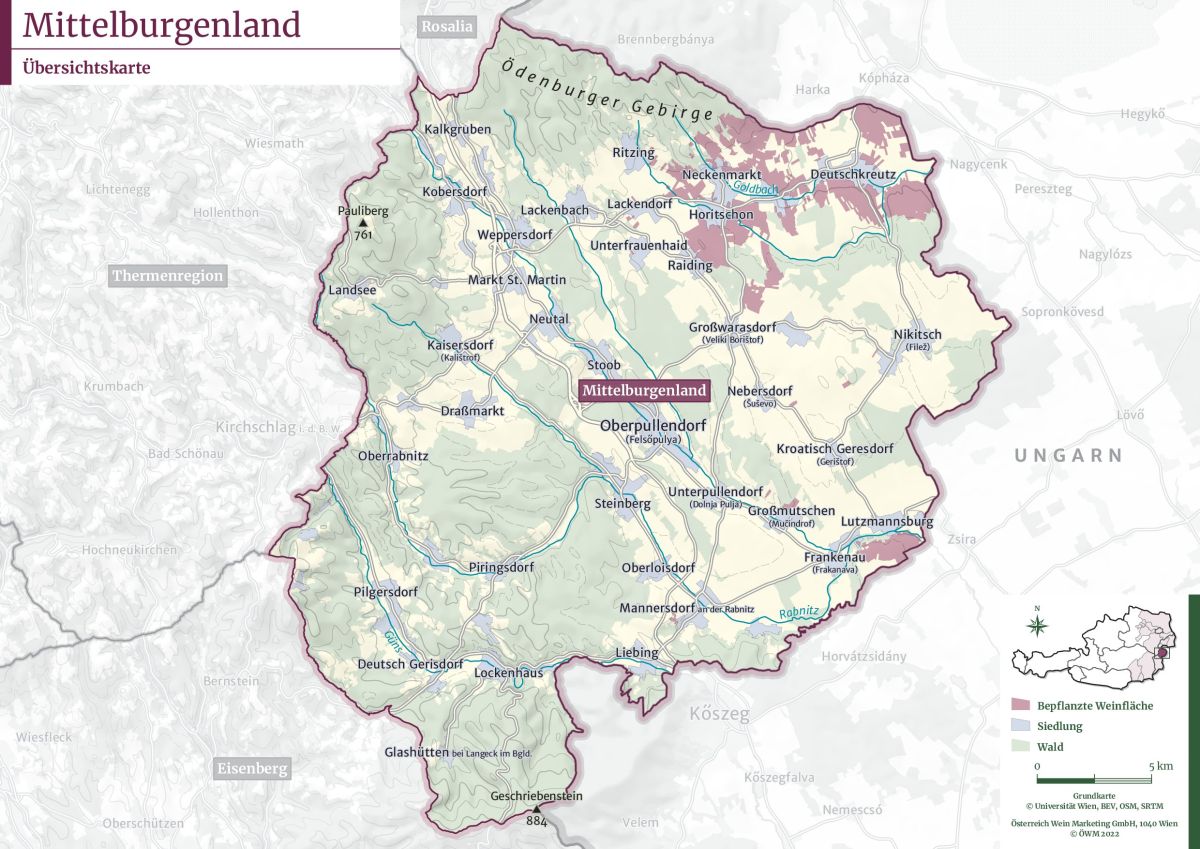Since the 2006 vintage, wine-legally defined DAC area (specific wine-growing region) in the Austrian wine-growing region of Burgenland (generic wine-growing region). See under Mittelburgenland.
Central Burgenland
One of the six specific wine-growing regions in the Austrian province or generic wine-growing region of Burgenland. In 2016, a reorganisation took place with some changes to the names and area boundaries. However, Mittelburgenland was not affected by this; the name and boundaries remained the same.

History
The Celts and Romans were already cultivating vines here. According to legend, the Frankish Emperor Charlemagne (742-814) also visited this region. Cistercian monks from Burgundy brought the grape varieties Blaufränkisch and Pinot Gris (Pinot Gris) with them in the Middle Ages and cultivated viticulture.
Climate & soils
The three ranges of hills Ödenburger Gebirge in the north, Bucklige Welt in the west and Günser Bergland in the south provide protection from cold winds. Warm, Pannonian climatic influences flow in from the east and the nearby Lake Neusiedl, like all bodies of water, has a climate-regulating effect. The predominant soil types are sand, loam and sometimes gravel formations with good water retention. A varietal study at the Federal Office of Viticulture in Eisenstadt established that the origin of Mittelburgenland can be determined analytically. This is possible on the basis of wine constituents, in particular minerals and flavourings. The very high content of the health-promoting phenolic compound resveratrol is striking.
Wine-growing communities & vineyards
The hilly, wooded region covers the entire central part of the province between Lower Austria in the west and Hungary in the east. Well-known wine-growing communities include Deutschkreutz, Frankenau, Kroatisch Geresdorf, Kleinwarasdorf, Horitschon, Lackenbach, Lutzmannsburg, Neckenmarkt, Nikitsch, Ritzing, Unterfrauenhaid and Unterpetersdorf. Well-known vineyards (sites) are Dürrau, Gfanger, Hochäcker, Hochberg, Kart and Kirchholz.

Grape variety index
In 2022, the vineyards covered 2,035 hectares of vines. Compared to 2017 with 2,104 hectares, this was a reduction of 69 hectares (3.3%). The proportion of red wine varieties is 92%, white wine varieties 8%. Central Burgenland is Austria's red wine-growing region. Blaufränkisch dominates with more than half, which is why it is also known as "Blaufränkischland". It is followed by the Zweigelt, Merlot, Grüner Veltliner and Cabernet Sauvignon varieties:
Grape variety
|
in Austria
|
colour |
HA
|
%
|
HA
|
%
|
| Blaufränkisch | - | red | 1.046 | 51,4 | 1.151 | 54,7 |
| Zweigelt | Blauer Zweigelt, Rotburger | red | 497 | 24,4 | 461 | 21,9 |
| Merlot | - | red | 127 | 6,3 | 122 | 5,8 |
| Grüner Veltliner | Weißgipfler | white | 71,4 | 3,5 | 87 | 4,1 |
| Cabernet Sauvignon | - | red | 78,2 | 3,8 | 82 | 3,9 |
| Syrah | Shiraz | red | 37,5 | 1,8 | 38 | 1,8 |
| Roesler | - | red | 24,3 | 1,2 | 20,6 | 1,0 |
| Chardonnay | Morillon - not used in... |
Voices of our members

In the past, you needed a wealth of encyclopaedias and specialist literature to keep up to date in your vinophile professional life. Today, Wine lexicon from wein.plus is one of my best helpers and can rightly be called the "bible of wine knowledge".
Prof. Dr. Walter Kutscher
Lehrgangsleiter Sommelierausbildung WIFI-Wien